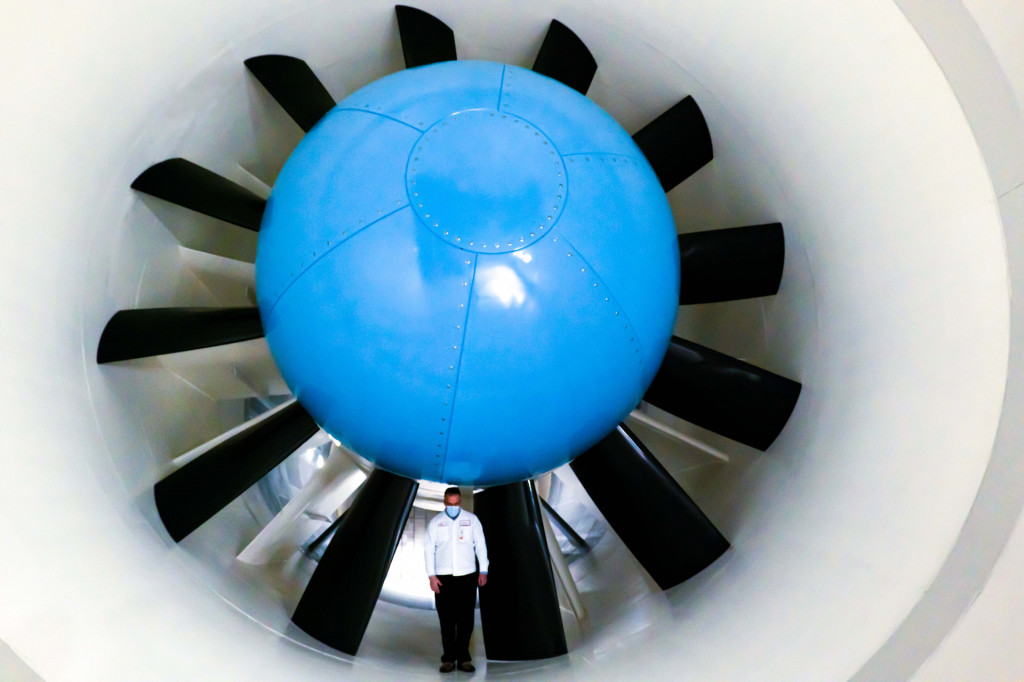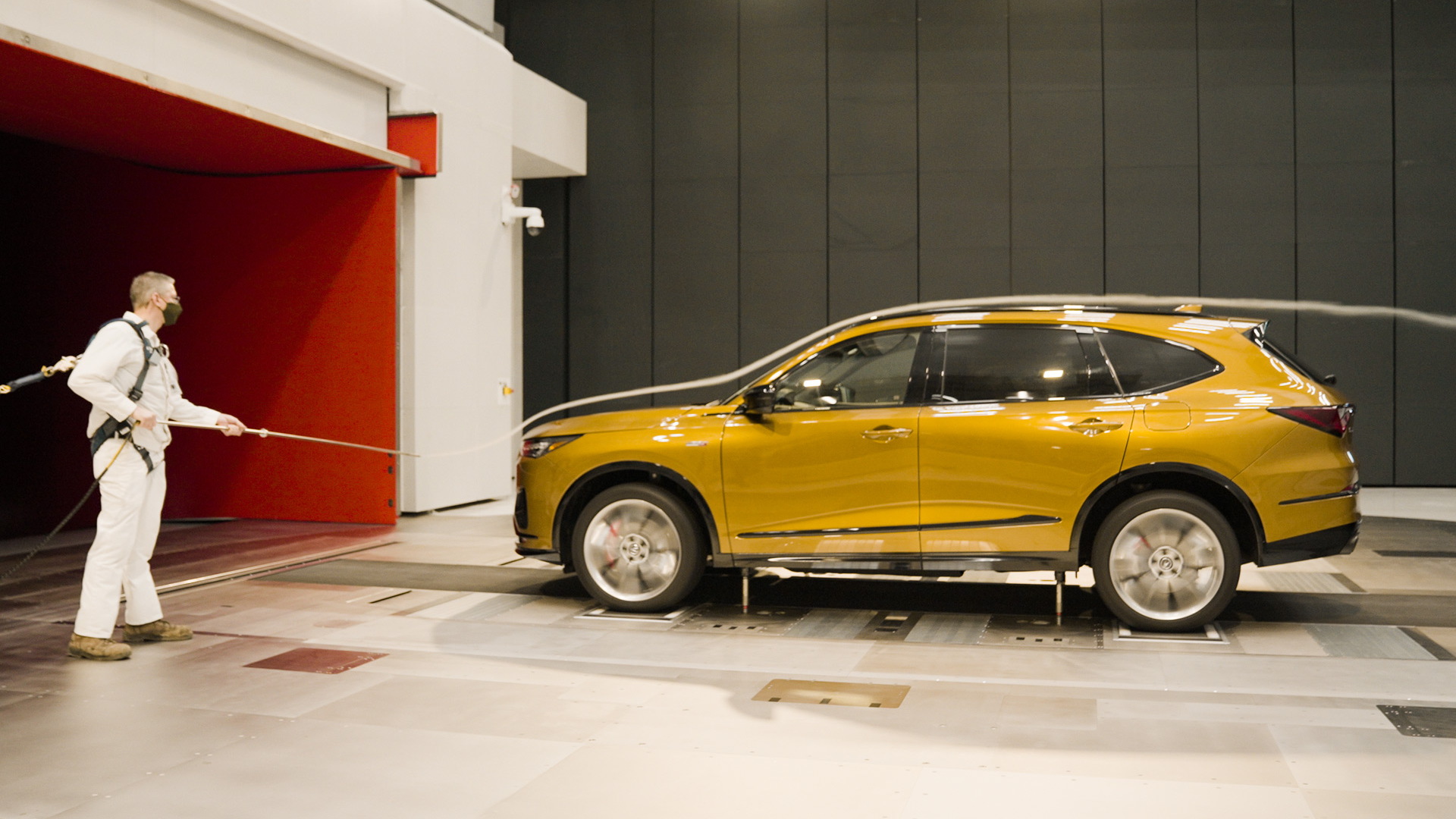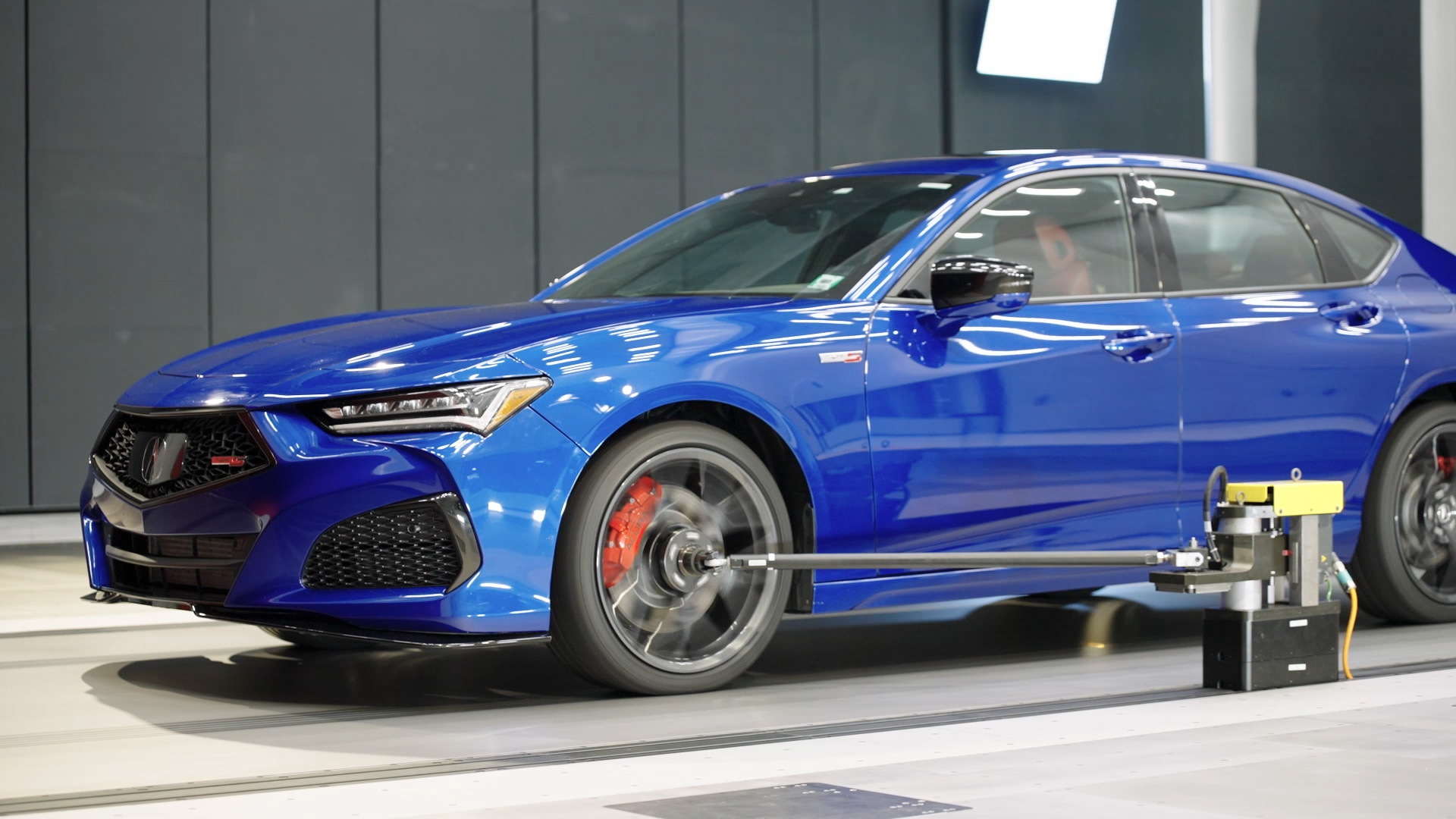Honda on Monday announced the opening of a new $124 million wind tunnel facility that could aid in the development of future electric cars.
Located at the independent Transportation Research Center in East Liberty, Ohio, the Honda Automotive Laboratories of Ohio (HALO) facility was designed for testing both aerodynamics and aeroacoustics, Honda said in a press release.
Both elements are extremely important to EVs. Aerodynamic optimization helps maximize highway range, while aeroacoustics addresses the wind noise that would otherwise be drowned out by internal-combustion engines and their exhaust systems. At the HALO facility, an array of microphones and cameras allow areas to pinpoint areas on a vehicle causing wind noise, Honda said.

Honda wind tunnel facility in East Liberty, Ohio
The wind tunnel uses a single 26-foot fan with 12 carbon-fiber blades. The fan is powered by a 6,700-horsepower electric motor and spins at up to 250 rpm, Honda said. At that rpm, it creates wind speeds of more than 190 mph.
Honda plans to completely phase out internal-combustion engines from its North American lineup by 2040, replacing them with a combination of battery-electric and hydrogen fuel-cell vehicles. It sees those two groups making up 40% of its sales by 2030 and 80% by 2035. Honda is also jointly developing EVs with Sony for 2025, although it's unlikely that the HALO wind tunnel is related to that project.
In the meantime, Honda plans the Prologue, a General Motors-based and GM-built SUV due by 2024. A previous report said Honda was targeting 70,000 annual U.S. sales for the Prologue, which will be the automaker's first U.S.-market EV since the discontinuation of the Clarity Electric after the 2019 model year.


















